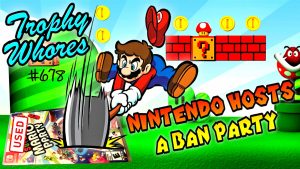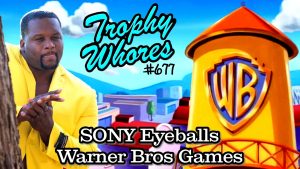There are many RPGs that try to make a name for themselves in the world of gaming. Not many of them succeed. With Bioware, Blizzard, and Bethesda dominating an RPG realm that was owned by Japanese games, 20 years ago, it makes one wonder if the Final Fantasy series has a say in the American market anymore.
Even though Square-Enix has produced a degree of “questionable” quality games (Final Fantasy XIV, Dungeon Siege III, Front Mission Evolved, etc.), the company is still pushing through in adding to the Fabula Nova Crystallis series with Final Fantasy XIII-2.
For those of you who are not familiar with Square-Enix latest Final Fantasy project, the Fabula Nova Crystallis is a series of games (Final Fantasy XIII, Final Fantasy XIII-2, Final Fantasy Versus XIII, and Final Fantasy Type-0) that centers on the theme of crystals and their affect on the universe. For those that haven’t played Final Fantasy XIII, this love/hate type game focuses on fugitive on the run in an attempt to stop the world from being destroyed by crystal like machine gods. Hard to understand that notion, but becomes understandable when you play the game.
Square-Enix tried making the gamer enjoy the beauty of XIII’s combat, cut scenes, and World when they limited the combat mechanics and ability to travel between town. This helped to add the danger that the fugitive protagonists were on the run, but many people felt a bit detached from the game unlike previous series.
Square-Enix looked at these issues and tried to address them, in Final Fantasy XIII-2, without destroying the lore established by its predecessor.
The game kicks off three years after FF XIII. Lightning, FFXIII’s main hero, has gone missing from the timeline and ended up in Valhalla, a world where time has no meaning. It is up to Lightning’s sister, Serah, and a mysterious time traveler, Noel, to travel through time and figure out what happened to Lightning and the time frame.
The main focus of the game involves traveling through different time periods and fixing time paradoxes.
An example is you travel back in time to the Civil War era, 1861-1865. Once there you discover the South is using Apache helicopters during the war while the North is using night vision goggles. That notion is a time paradox because the helicopters and NVGs weren’t used during that time period. Because that time paradox exists, the rest of time is in a state of disarray. Only way to repair time is to remove that paradox from the improper time period. That is the essential mission for Final Fantasy XIII-2.
This concept provides a very useful tool to the world because it allows the gamer to see a lot more of the Final Fantasy world and culture. It also allows the gamer to travel back and forth to look at the time periods and interact with the people. A concept that was removed from Final Fantasy XIII.
The game play concept seems like a great way to play this game, but the dialogue and interaction tends to insult the gamers’ intelligence. Purposely misspelling artifacts with “Artefacts” doesn’t make a game cool. At one point the characters were discussing a time paradox mirror. When the dialogue states, “This mirror must be from the future….. Or the past…… It doesn’t belong in this time period…” one gets the sense that Square-Enix assumes gamers have a low level of intelligence.
The combat mechanics are pretty much the same from Final Fantasy XIII, but it has been improved for a greater feel of involvement. The combat is composed of the same “trial and error” class team up battles. This set up allowed for gamers to try and experiment different tactics without being punished. The combat now possesses a Pokemon type concept where the player can capture monsters, train them, and have them fight on one’s side. It’s not a bad twist to the series, but the concept still needs improvement.
The cinematic action events, a mini game in mid combat, has a feel that one is doing a little more than just standing around waiting to attack or be attacked. The mog clock, an ability to attack the enemy before the actual battle, has been added to help set an advantage/disadvantage before combat.
When not in combat, the gamer can take part in dialogue action events where they get to choose what to say in regards to the plot. This allows the player to unlock one of five different endings for the game. The game is also shorter than the average Final Fantasy game so you can replay it again and obtain those different endings.
The characters are a little more fleshed out and the story gives the gamer a better feel on the Crystal theme. For those Final Fantasy XIII fans, you get to see how the past characters have come along in the series.
The sequel has come a long way from its predecessor, but still has a lot to work on. The time traveling concept was a great jumping off point for the series, but doesn’t deliver much. A component that is absolutely critical when Final Fantasy series is struggling to keep up with other RPGs.
I give Final Fantasy XIII-2 thumbs down for our ProvenGamer fans.


More Stories
Everspace 2 Review
Graveyard Keeper Review
Cosmic Star Heroine – Nintendo Switch Review